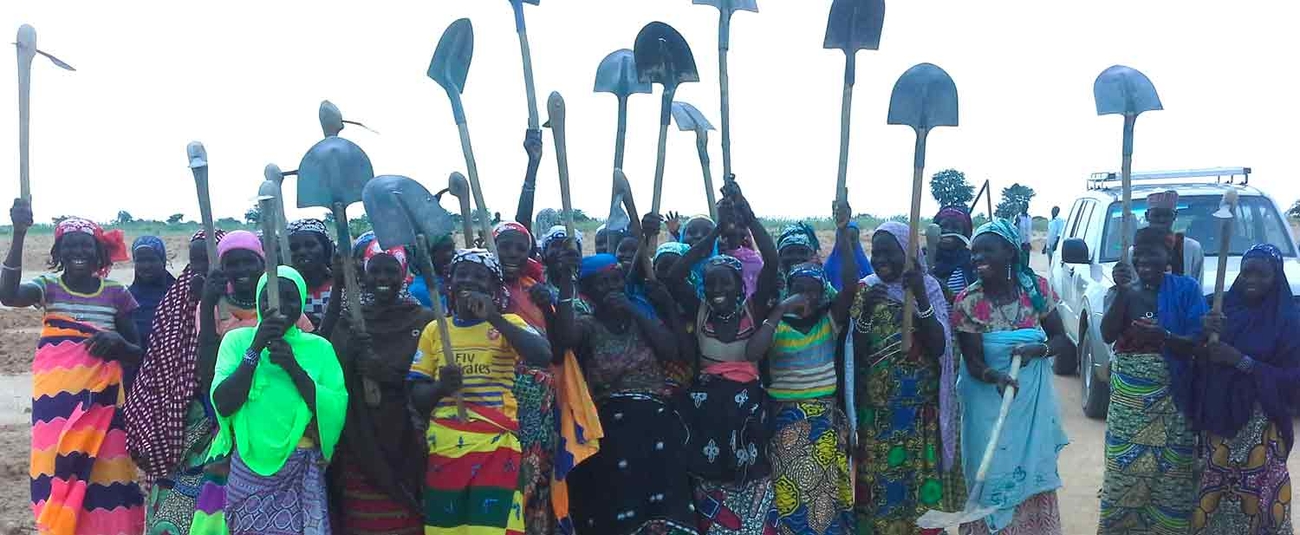
AAAP Webinar: Adaptation financing must go to those who need it most
5 May, 2022The Africa Adaptation Acceleration Program (AAAP) hosted a session titled, “AAAP: Transformative Adaptation to Accelerate and Scale Climate Action” at the Virtual Gobeshona Global Conference on 29 March. The session focused on policy shifts, the enabling environment, financing, community engagement and private sector involvement to accelerate and scale climate adaptation in Africa.
The session brought together policy makers, sustainable financiers, climate resilience experts and youth advocates to discuss the latest report by the Intergovernmental Panel on Climate Change (IPCC) that calls for increased speed and scale in implementing adaptation actions.
“Climate change impacts are already occurring, faster and more severely than previous IPCC reports indicated,” said Dr. Rebecca Carter, the Acting Director, Climate Resilience Practice at the World Resources Institute, setting the scene for the session. “This new report makes it clear that we are already facing irreversible losses and damages to human societies and ecosystems around the world, “Carter added.
Prof. Philip Antwi-Agyei, an Associate Professor at the Kwame Nkrumah University of Science and Technology and Lead Author of IPCC’s special report on the impacts of global warming of 1.5 °C said there is the need to incorporate indigenous knowledge with scientific knowledge to develop the most effective adaptation interventions and solutions. Farmers, use indigenous knowledge to predict drought and rainfall and this knowledge is important for adaptation action, Antwo-Agyei added.
Zambia Ministry of Green Economy and Environment official Chitembo Kawimbe Chunga said adaptation should be integrated into local and national development plans.
She added that laws, policies and regulations on adaptation exist in Zambia that show where and how to adapt. Zambia is working with development partners including the African Development Bank to explore best practices for adaptation and resilience building among communities. Chunga is also the National Coordinator of both the Transforming Landscapes for Resilience and Development and the Zambia Strengthening Climate Resilience projects.
The audience followed presentations on different funding sources, including green bonds and blended finance to mobilise finance for adaptation.
According to Peter Wamicwe, a Sustainable Finance Specialist at the CGIAR, “investors need to come in in numbers and have different areas of focus. Some can focus on financial returns while others on environmental and social impact.”
Crowding in different types of investors can reduce risk and achieve impact, Wamicwe said.
AAAP – a joint initiative of the African Development Bank and the Global Center on Adaptation – aims to mobilise $25 billion to drive adaptation across the African continent to strengthen food security for at least 10 million people, support one million youth with entrepreneurship skills and job creation, and integrate climate resilience into about $7 billion worth of infrastructure investments, among other results.
Speaking during the session, Senior Director for Africa at the Global Center on Adaptation, Prof. Anthony Nyong said that AAAP is a strong response to another crisis: climate change.
“What is crucial is that this program is an Africa-owned and Africa-led response to the continent's vulnerabilities and opportunities,” Nyong said.
In a panel discussion on the role of youth in climate adaptation, Aramide Abe, Regional Manager, Youth Jobs and Entrepreneurship, Global Center on Adaptation said youth have demonstrated ingenuity to drive adaptation solutions.
She added that youth-led start-ups on the continent are creating solutions and mobilising financing, and that “AAAP is supporting youth-led businesses on the continent to avoid the ‘valley of death’ that the majority of businesses on the continent go through due to lack of skills and funding.”
Alphaxard Gitau, a youthful dairy farmer in Kenya and market value chain specialist, said that while financing is available it needs to be structured in a way that meets the needs of youth
The panelists recommended putting adaptation finance in the hands of those who bear the brunt of climate change. They urged the use of a blend of public and private finance to target and tailor interventions and that the potential of youth should be harnessed in practical ways to effect change, and to scale and sustain adaptation actions across all spheres.
Click here to view a recording of the session